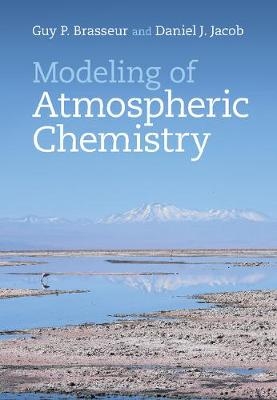
Modeling of Atmospheric Chemistry
Cambridge University Press (Verlag)
9781107146969 (ISBN)
Mathematical modeling of atmospheric composition is a formidable scientific and computational challenge. This comprehensive presentation of the modeling methods used in atmospheric chemistry focuses on both theory and practice, from the fundamental principles behind models, through to their applications in interpreting observations. An encyclopaedic coverage of methods used in atmospheric modeling, including their advantages and disadvantages, makes this a one-stop resource with a large scope. Particular emphasis is given to the mathematical formulation of chemical, radiative, and aerosol processes; advection and turbulent transport; emission and deposition processes; as well as major chapters on model evaluation and inverse modeling. The modeling of atmospheric chemistry is an intrinsically interdisciplinary endeavour, bringing together meteorology, radiative transfer, physical chemistry and biogeochemistry, making the book of value to a broad readership. Introductory chapters and a review of the relevant mathematics make this book instantly accessible to graduate students and researchers in the atmospheric sciences.
Guy P. Brasseur is a Senior Scientist and former Director at the Max Planck Institute for Meteorology, Hamburg, and a Distinguished Scholar at the National Center for Atmospheric Research in Boulder, Colorado. He received his doctor's degree at the University of Brussels and has conducted research in Belgium, the USA, and Germany. He was Professor at the University of Brussels and the University of Hamburg. His scientific interests include questions related to atmospheric chemistry and air pollution, biogeochemical cycles, climate change and upper atmosphere chemistry and dynamics. He has chaired several international research programmes, and is associated with national Academies in Hamburg, Brussels, and Oslo. Daniel J. Jacob is the Vasco McCoy Family Professor of Atmospheric Chemistry and Environmental Engineering at Harvard University, Massachusetts. He received his PhD from the California Institute of Technology in 1985 and joined the Harvard University faculty in 1987. His research covers a wide range of topics in atmospheric composition, with focus on model development and applications to interpretation of observations. Among his professional honors are the NASA Distinguished Public Service Medal (2003), the American Geophysical Union Macelwane Medal (1994) and the Packard Fellowship for Science and Engineering (1989). Jacob has published over 350 research papers and trained over 80 PhD students and postdocs in atmospheric chemistry modeling over the course of his career.
Preface; 1. The concept of model; 2. Atmospheric structure and dynamics; 3. Chemical processes in the atmosphere; 4. Model equations and numerical approaches; 5. Formulation of radiative, chemical, and aerosol rates; 6. Numerical methods for chemical systems; 7. Numerical methods for advection; 8. Parameterization of small-scale processes; 9. Surface fluxes; 10. Atmospheric observations and model evaluation; 11. Inverse modeling for atmospheric chemistry; Appendix A. Physical constants and other data; Appendix B. Units, multiplying prefixes and conversion factors; Appendix C. International reference atmosphere; Appendix D. Chemical mechanism; Appendix E. Brief mathematical review; Further reading; Index.
| Erscheinungsdatum | 14.08.2017 |
|---|---|
| Zusatzinfo | 30 Halftones, color; 7 Halftones, black and white; 145 Line drawings, color; 40 Line drawings, black and white |
| Verlagsort | Cambridge |
| Sprache | englisch |
| Maße | 183 x 262 mm |
| Gewicht | 1470 g |
| Themenwelt | Naturwissenschaften ► Biologie ► Ökologie / Naturschutz |
| Naturwissenschaften ► Geowissenschaften ► Meteorologie / Klimatologie | |
| ISBN-13 | 9781107146969 / 9781107146969 |
| Zustand | Neuware |
| Informationen gemäß Produktsicherheitsverordnung (GPSR) | |
| Haben Sie eine Frage zum Produkt? |
aus dem Bereich


